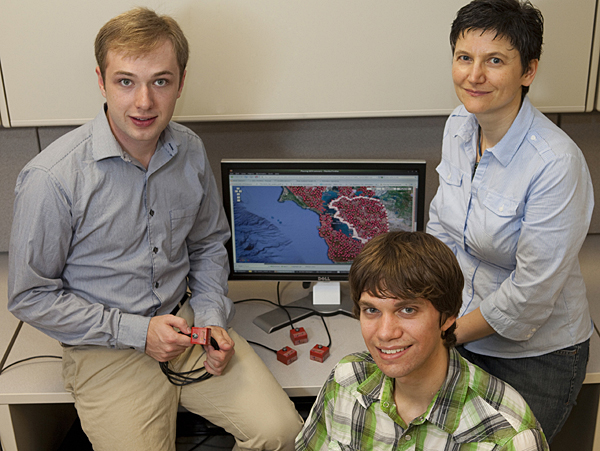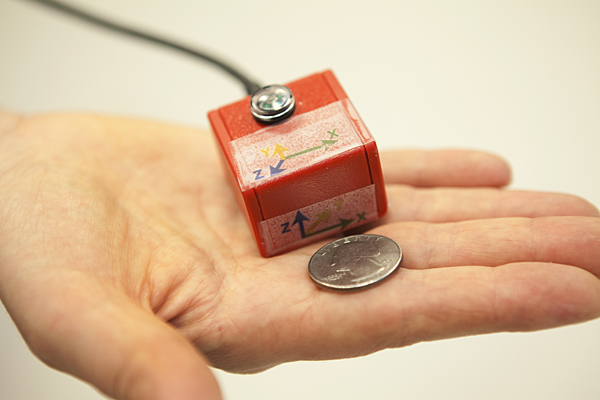


Early quake alerts
Simulation modeling could enhance earthquake detection, warnings
1:05 p.m., July 15, 2011--Six thousand seismic sensors, 200 volunteers and a University of Delaware researcher all have one thing in common – helping scientists study earthquakes.
Michela Taufer, assistant professor in the Department of Computer and Information Sciences, is collaborating with researchers from Stanford University and the U.S. Geological Survey to implement a new network of seismic sensors aimed at arming communities with early earthquake detection and warning capabilities.
Research Stories
Chronic wounds
Prof. Heck's legacy
The sensors, no bigger than a Post-it note, are part of a new phase of the Quake-Catcher Network (QCN), a project gathering detailed data to help scientists understand the earthquake process and how to mitigate against its effects.
“We are honored that Jesse Lawrence from Stanford and Elizabeth Cochran from the U.S. Geological Survey turned to UD’s Department of Computer and Information Sciences for help in improving the QCN network,” says Taufer, a co-principal investigator on the project and the only computer scientist involved.
Supported by a grant from the National Science Foundation, the study also includes seismologists from University of California-Berkeley, California Institute of Technology and University of California-San Diego.
“Earthquake aftershocks pose an immense threat to humans after the main shock, but real-time testing of the sensors is impossible,” says Taufer, which is why she and her UD research team developed EmBOINC, a simulation software that emulates the architecture currently used by QCN to detect earthquakes – Berkeley Open Infrastructure for Network Computing (BOINC).
By examining the current QCN network’s data transfer statistics and running software simulation tests, Taufer says her group is able to determine the appropriate architectural changes needed to increase the speed and robustness of the network. The goal is to overcome current limitations to improve the software’s data processing capability and enable it to accommodate a larger number of sensors, from 1,000 sensors to 10,000.
Here’s how it works. Sensors are mounted to the floor in volunteer host locations (homes, offices, classrooms) across a geographic region, then wirelessly connected to software running in the background of a nearby computer. When an earthquake occurs, this software registers and downloads the sensor data onto a central server where it can be analyzed by the Quake-Catcher team, hopefully leading to advanced warning systems for citizens in earthquake prone areas.
“The hope is that our EmBOINC simulation modeling will improve QCN’s earthquake detection algorithms, enhance the seismic sensor capabilities and lead to improvements that will enable the real network to react faster in a true emergency,” Taufer says.
“It’s cool that what we’re doing could someday help warn communities about an impending earthquake,” notes Samuel Schlachter, an undergraduate computer engineering major contributing to the project.
Taufer says she believes that computer science and undergraduate research are important pillars that can support the scientific research of other disciplines, in this case seismology.
It can also lead to publishing opportunities, according to Kyle Benson, lead author of a paper co-written with Taufer and graduate student Trilce Estrada. The paper is currently under consideration for IEEE’s 2011 eScience conference.
“If accepted, it will be my first publication,” says Benson, who graduated UD in May and begins work toward his doctorate in computer science at University of California-Irvine this fall.
To learn more about how QCN is deploying the seismic sensors in California using volunteer hosts, click here.
Article by Karen B. Roberts
Photographs by Ambre Alexander









